What To Look For Under The Hood When Buying A Used Car?
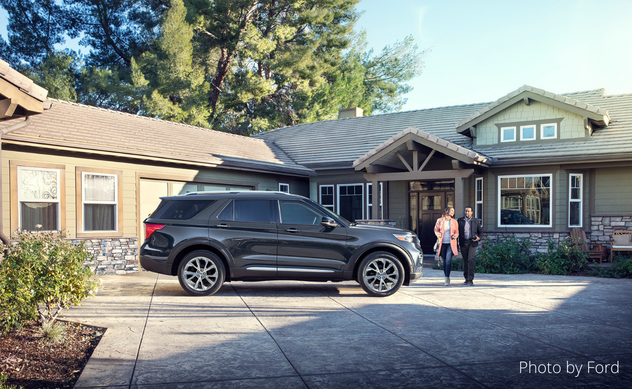
Once you’ve chosen a used car that fits your needs, you’re going to want to look under the hood to figure out if that car is going to be good or cause you headaches from the start.
I’ve recently purchased a used car and spent countless hours researching through forums and videos to guide me on my used car purchase. With those learnings, I've compiled these eight tips on what to look for under the hood when buying a used car. The tips helped me figure out whether the car was going to be good, if I should haggle on the price, or simply walk away. Best of all, it only takes about 30 minutes to run through.
Here are the tips ranked from most important to least important when conducting your own inspection on a used car.
In this article (Skip to…)
- The First Steps Before Looking Under The Hood
- What To Look For Under The Hood
- What To Do After You Inspect Under The Hood
The First Steps In Inspecting a Used Car
Before you even look under the hood or even drive a used car before a purchase, here are five warning signs (literally) you can easily look for prior to looking under the hood.
These items will let you know if your car was routinely serviced, had quality parts installed or if there’s been some deferred maintenance:
- Warning Lights
- Tires
- Brakes
- Non-Functioning Parts
- Cleanliness and Quality of Interior
1. Warning Lights
If you see a warning light or a check engine light when you go inside the car and turn the key, that’s enough to let you know that there may be some serious issues with the car.
The most common warning lights you may encounter:
- Check Engine
- Tire Pressure
- “Change Oil Soon”
The best-case scenario is that you see no lights at all.
Don’t panic if you encounter a tire pressure light as it’s common on older cars once the air pressure sensors in the tires get old and need replacing.

The “change oil soon” message is where you should start asking questions. Many people are guilty of doing their own oil changes and not resetting the “change oil soon” message, so the seller may have forgotten this step—but be sure to ask.

If you see a check engine light illuminated in red, yellow, orange or it’s flashing—it may be best to walk away. Even if the seller let’s you know what the issue is, you may not be able to fix that issue and you’ll probably step into a rabbit-hole of other problems.
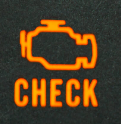
2. Tires
Tires are one of the most crucial elements to look at. They can indicate many things such as how much the current owner was willing to spend on service and how recently they’ve had service done.
You'll want to check the tires for:
- Proper Inflation
- Balding
- Age
- Quality
Flat or vastly different air pressure in the tires may indicate that the current owner is not paying attention to their car.
Balding tires may indicate that the current owner is deferring maintenance. Be sure to do the "penny test" to figure out the tread depth of each tire.
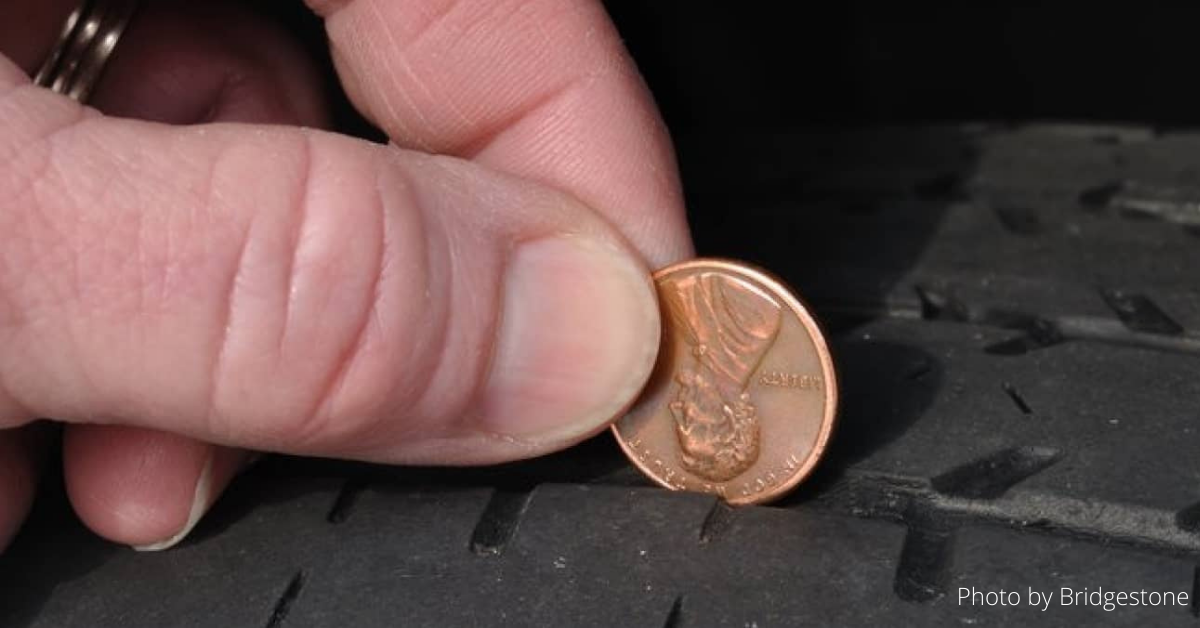
Old tire dates may indicate that it’s time for their replacement and you could use this as a bargaining tool to reduce the used car price.
In case you're wondering how to find the date on the tire, the first two numbers highlighted below indicate the week the tire was made and the two other numbers indicate the year.
The tire below would have been made in the 27th week of 2018. If there's still tread left but the age of the tire is approaching ten years, it's close to needing replacement.
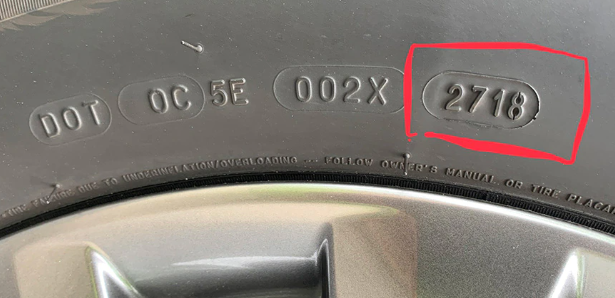
Quality or brand of the tire may indicate how much the current owner was willing to spend to service their car.
3. Brakes
While you’re looking at the tires, you can easily have a look at the brakes and rotors between the wheel spokes for even more clues.
Severely worn pads may indicate that the current owner is deferring maintenance.
If possible, stick your phone camera near the brake caliper to snap a picture. The pad shown below looks to have enough life left in it. You don't want to see it as flat as a piece of paper.
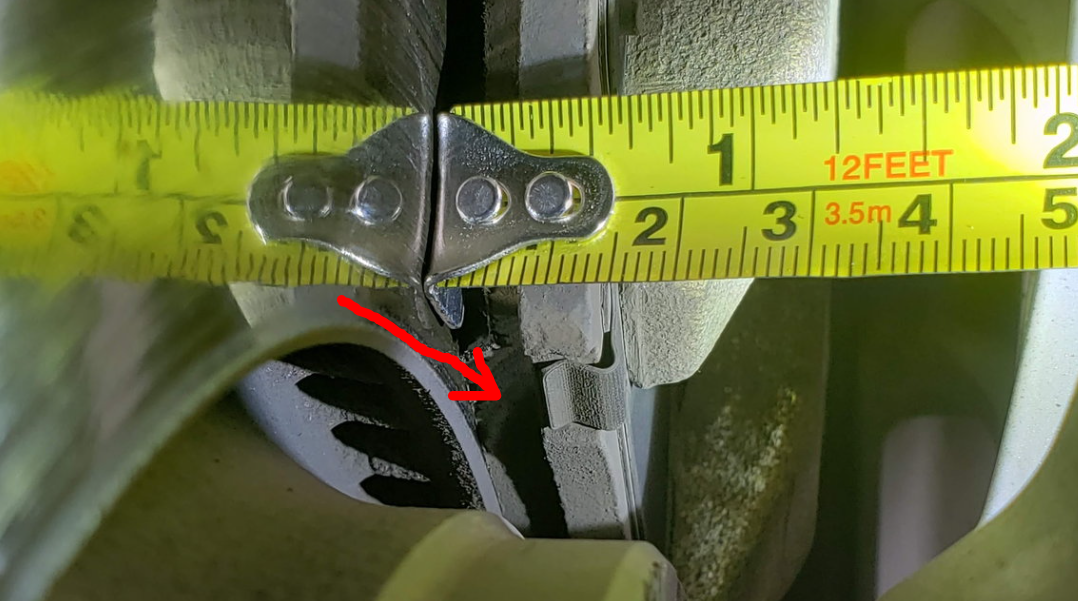
If the rotors have a lip or are warped, you can use this as a bargaining tool to reduce the price since they will need replacing soon.
The surface of the rotor should be smooth and it should not have an outer edge (or a lip) like the image below.
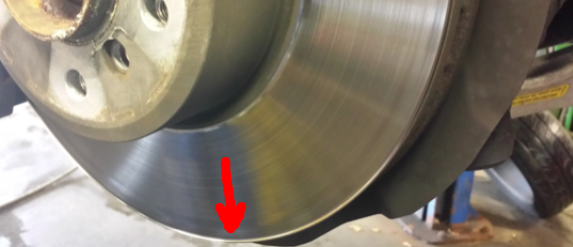
4. Non-Functioning Parts
Although you may be able to live with some non-functioning parts, you should be very cautious and understand why they’re not working and have not been fixed yet.
For example, let’s say you notice a light bulb is out in one of the headlights. If a $20 part and a couple hours worth of time for repair hasn’t been fixed, what’s to say there aren’t any other problems that haven’t been addressed?
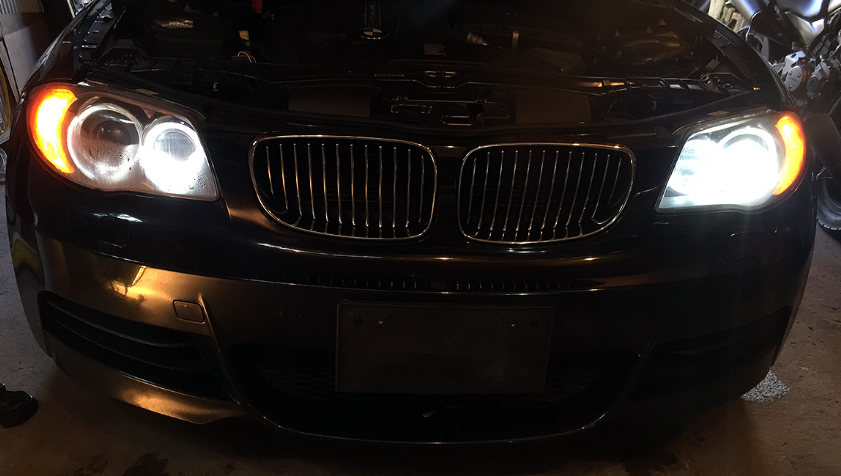
5. Cleanliness and Quality of Interior
You’re not going to find show-room quality interiors when shopping for a used vehicle, but you should at least expect some level of presentation when looking around. Here are some things to watch out for:
- Odor
- Badly Worn Seats
- Dirty Interior
If there is odor when you first open the door, it could indicate that the car was used by a smoker or that there are water leaks.
Water leaks will cause a mildew-like smell and you can verify if there’s any water in the car by raising the floor mats. Both types of odors can be very hard to get rid of.
Be weary of lot's of air fresheners inside as they may be trying to cover up the smell.
Also, be sure to check all the seats up front and in the rear. A low mileage car should not have badly worn seats.
If the interior has not been cleaned out in a while, you’ll probably notice right away. After purchasing, you can always be clean it to your liking, but if the seller did not bother to do at least some level of cleaning, that could be a sign for how much they cared for the vehicle.
What To Look For Under The Hood
Now that we got some basics out of the way, you’re ready to look under the hood. Checking off these eight items will help you in identifying a good used car without having to take it to the mechanic.
Then, once you’ve had a look under the hood and everything checks out, you’ll be ready to do a final step and take it on a test drive.
When purchasing a used car and looking under the hood, you'll want to check the:
- Body Structure
- Fluid
- Hoses and Belts
- Wiring Loom
- Radiator
- Battery
- Engine Bay
- Engine For Noise
1. Body Structure
One of the most important things that you should be looking for under the hood is the body structure.
After all, according to The National highway Traffic Safety Institute, front impact collisions are the most common type of crash, so it’s best to verify if the car you’re looking at has any prior damage.
Damage to the front can be covered up, but there are some simple ways to check and items to look at:
- Frame
- Body Panels
- Paint Color
A strong enough front-end collision could lead to many damaged components such as bumpers, fenders, and headlights—All of which can be replaced and repainted.
In addition to that damage, there could also be frame damage–and that’s more difficult to repair and cover up.
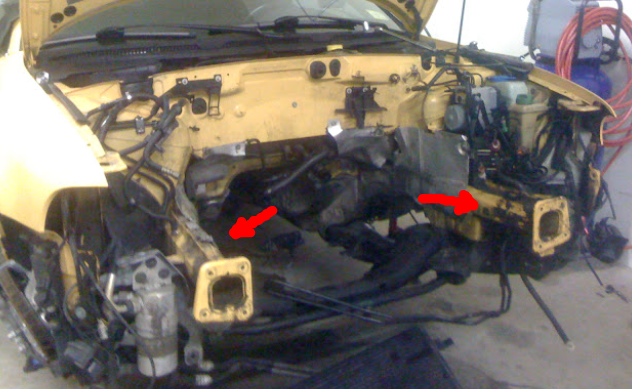
Once you pop the hood, you can verify for any previous repairs by looking at the frame on both sides of the car and seeing if they track straight.
Body panels are another tell-tale sign of prior damage or a recent minor repair. If you notice any inconsistent gaps between the hood and the fender, or the hood and the front bumper, then you can assume that there was some prior damage.
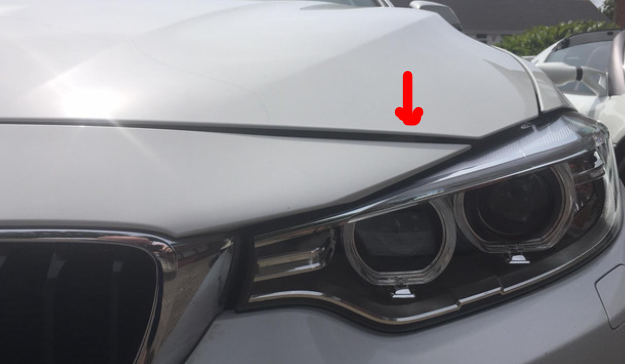
Body panel gaps should be consistent and align properly.
The final thing you can look for is any difference in paint color under the hood. The color of the paint in the engine bay should resemble and match the exterior. Some discoloration is fine depending on the vehicles age, but any large differences on newer models can indicate a recent paint job or repair.
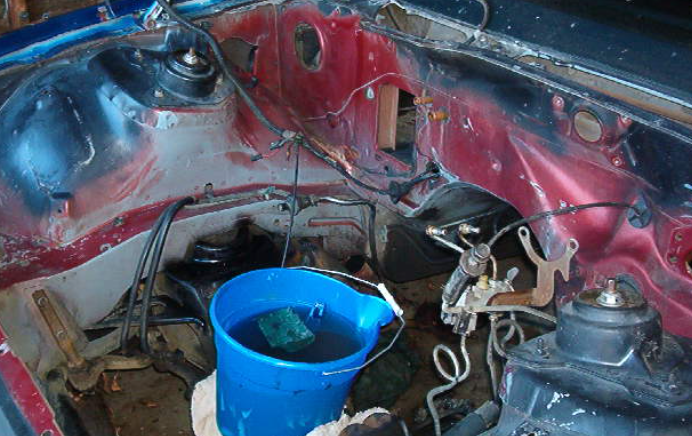
2. Fluid Inspection
The owners-manual will direct you on where to look to check all the fluid levels. You can also do some simple research online beforehand to see the engine bay to prepare for this step.
If the car is older, most of the time you’ll find appropriately marked caps under the hood for each type of fluid. However, if the car is on the newer side, sometimes things are hidden under shrouds of plastic.
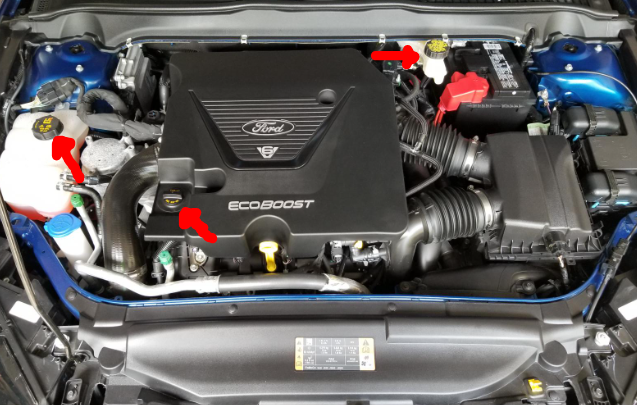
Be sure that the car’s engine is cold and has not been started recently before you go pulling some of these caps off:
- Oil
- Coolant
- Power Steering
- Transmission
When pulling the engine oil cap off, make sure that any liquid you see on the cap or inside the engine is a dark brown or black color. If it’s “milky” looking, that could be indicative of water in the oil, which is a big problem.
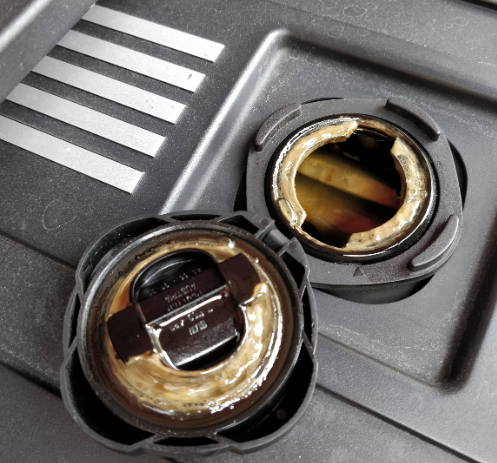
You can also pull the oil dipstick, if the car has one, to verify the color of the engine oil as well. This can also tell you how relatively full the engine is with oil. If it’s below empty, it’s time for an oil change.
Move on over to the coolant reservoir to check on the coolant. Coolant typically comes in vibrant colors like green, orange, blue or pink. If it’s “milky” or “rusty” looking, that could be a sign of a bad head gasket. (Similar to the engine oil color problem above)
Also, now would be a perfect time to check if there’s any splattering of liquid near the coolant reservoir. White splatters around that area are indicative of overheating issues.
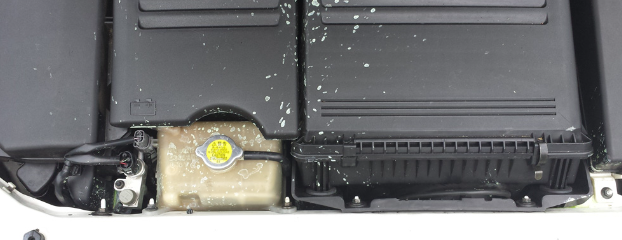
For the power steering fluid and transmission fluid, the most important thing to check here is the condition. These fluids should be topped up and not have any particles showing on the top or on their dipsticks.
3. Hoses and Belts
Hoses and belts require both a visual and physical inspection.
Be sure to squeeze the various hoses running to the radiator, A/C, and other parts. The rubber hoses should be firm and supple and without any cracks.
Do the same inspection with the drive belts. Look and feel to determine that the belts are free of cracks or fraying.
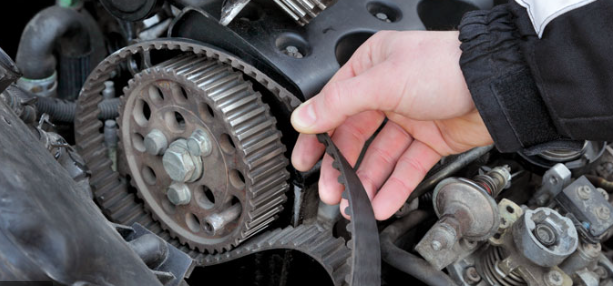
4. Wiring Loom
Different wiring looms control different electrical components of the car. Do a simple visual inspection to make sure that everything is intact and has not been tampered with.
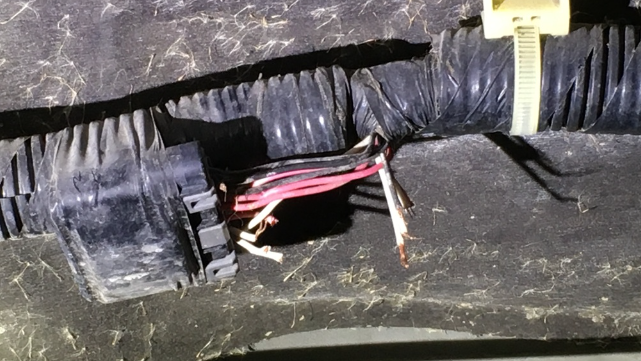
You’ll likely be able to tell if there’s been any amateur grade work done if there’s any black electrical tape in the area.
5. Radiator
You can visually inspect the radiator through the mesh in the front bumper, but with the hood propped open, you can get an even clearer view.
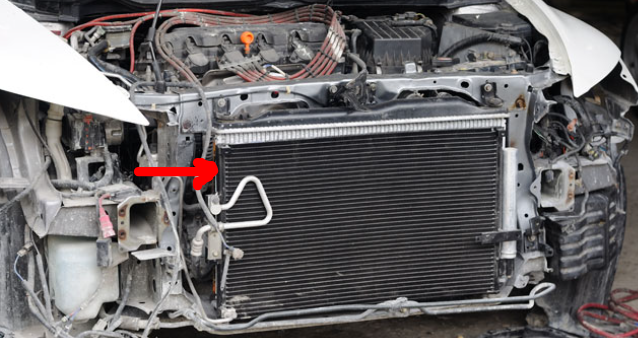
Visually inspect the radiator to make sure there are no cracks or leaks coming out.
6. Battery
Although you may have already verified that the battery works by doing the first steps in the section above, it’s always good to inspect the condition of the battery.
Sometimes you’ll be able to see the battery date code that will give you a clue as to how much life it may have left. Typically, batteries last between three to five years.
While inspecting the date, now is a good time to see if there’s any powder-type buildup on the terminals. This is not alarming, but rather indicates that they could be cleaned up if you do decide to purchase the car.
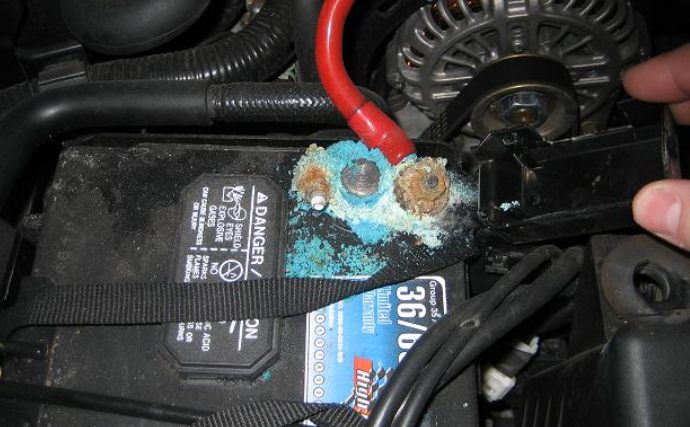
7. Engine Bay
One of the final things you can quickly check under the hood is the overall condition of the engine bay.
You want to see an engine bay that is a bit dirty and has not been recently cleaned. A fully cleaned engine bay that is spotless could indicate that the owner is trying to cover up something.
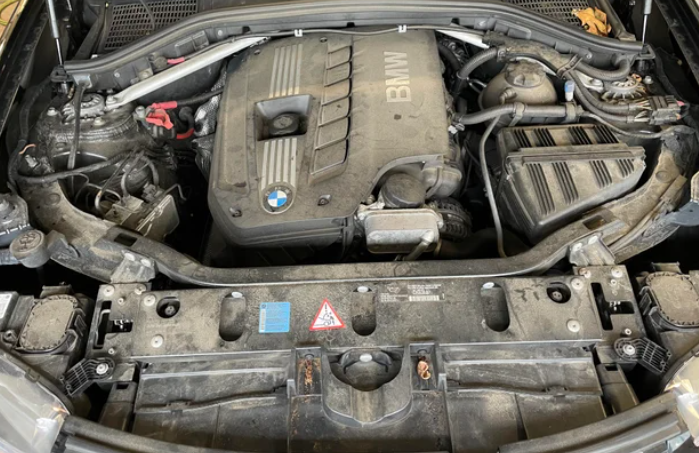
8. Engine Noise
Once you’ve gone through the steps above, you can now turn on the car and listen for any unusual noises coming from the engine.
Squeaks, rattles, or unusually loud ticking could all be signs that there is something wrong with the engine components—even if the check engine light is not on.
What To Do After You Inspect Under The Hood
If you’ve gone through all the steps above without any glaring issues, it’s time to take it on a test drive.
Do a test drive before purchasing to check on:
- Transmission
- Brakes
- Cooling System
- Suspension
- Alignment
While on the road, check that the car accelerates and shifts smoothly through all the gears. You’ll be able to catch any transmission and clutch issues right away.
Press the brakes while at speed to verify if there’s any vibration or noise.
You’ll also want to make sure you push the car hard once it’s up to operating temperature to make sure it’s not overheating.
Also, take the car through some sharp corners as you’ll be able to tell if there’s any alignment or suspension issues going on. You can also verify this if the car tracks straight without having to maneuver the steering wheel.
Take the car to highway speeds as well since any excess vibrations will not be noticeable at lower speeds.
Once you’ve gone through this entire list, you should feel comfortable on whether you should make that used car purchase.
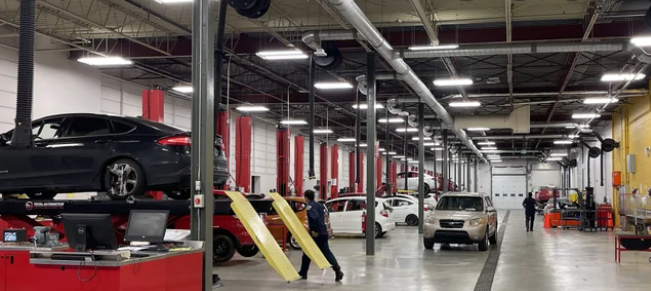
If you still have any doubts, you can always arrange to take the car to a trusted mechanic for a pre-purchase inspection. They’ll be able to take the car on a lift to dig deeper and identify any things you won’t be able to see while the car is on flat ground.
Like what you just read? Feel free to share this with your friends or on social media to keep the conversation going.
See also: Is The Used Car Market Going Down?
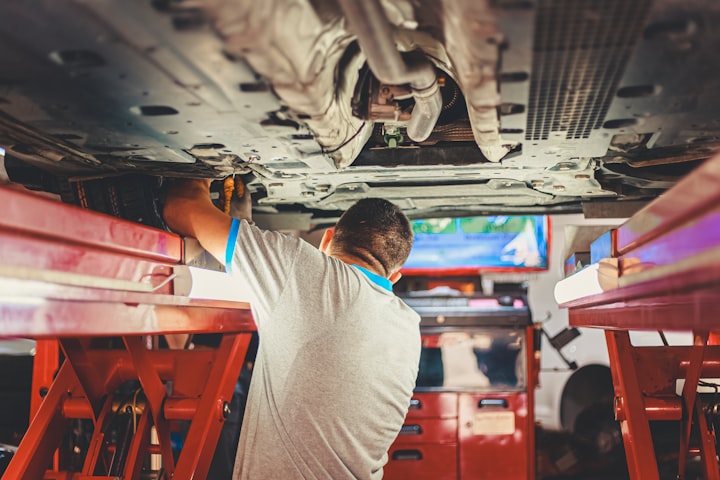
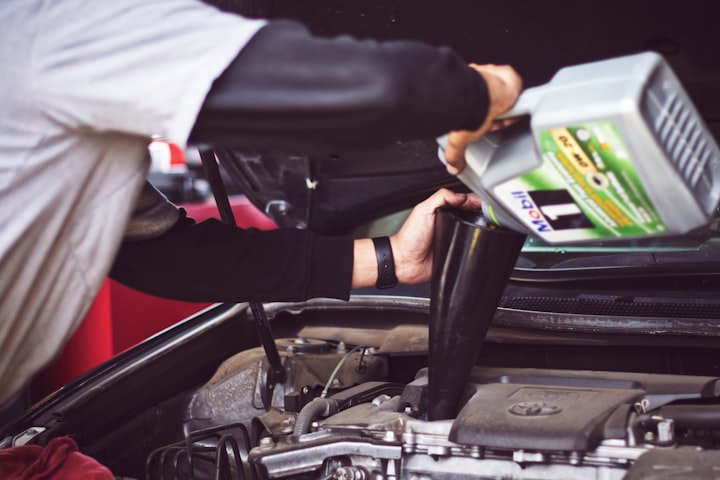
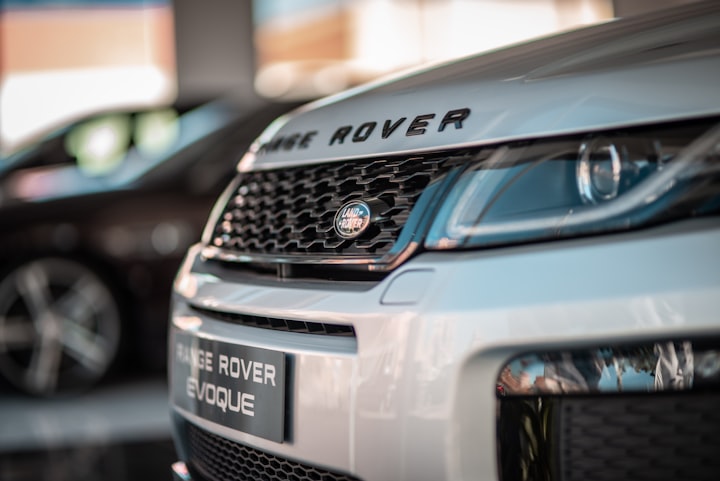
Comments ()